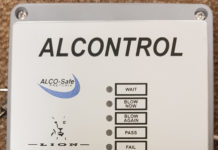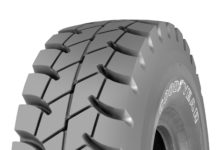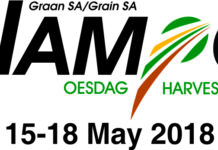The growing world population is presenting enormous challenges for the agricultural industry. The United Nations estimates that by 2030, enough food will have to be supplied to meet the needs of around 8.5 billion people. At the same time, the amount of space available for agricultural land is dwindling all the time, which means that more harvests have to be gathered in ever shorter times. The top priority for farmers, therefore, is to boost the efficiency of operations and, at the same time, ensure the sustainable use of resources. As the physical link between the soil and the agricultural machinery, tyres play an important role in increasing the efficiency of agricultural vehicles.
Optimum traction and soil protection thanks to minimal slip
Tyre pressure plays a crucial role. The higher the pressure, the smaller the tyre’s contact patch with the ground. This leads to high slip – that is, more of a loss in terms of distance covered – which, in turn, makes it harder for the vehicle to move forward in the field. In addition to the lower traction, this increases fuel consumption, tyre wear and the pressure on the ground. Reduced economic efficiency and agricultural performance are the result. Example: Maximum power transmission when a vehicle is traveling straight ahead is achieved with tyre slip of 10-15%. If the slip is 35%, tractor operating costs can increase by up to 23% when the tractor is driven at an average speed of 7 km/h over an area of 300 hectares.
The right degree of slip combined with good tractive power transmission can therefore make the vehicle more efficient and able to operate over longer periods of time. The right height of lugs, good self-cleaning properties of the tire, a large tyre diameter and a high air volume for low tire pressures are essential for ensuring optimum tractive power transmission. The right distribution of the ballast is also every bit as important as reserves for additional weights.
A product portfolio that addresses industry challenges
Continental has responded to these challenges with its new tyre portfolio for the agricultural industry. “When developing the new tires, we were unwavering in our quest to improve the quality and output of tractors on the field in terms of both vehicle performance and the utilisation of resources,” explains Thorsten Bublitz, product line manager for agricultural tyres at Continental Commercial Specialty Tires. “Optimum tractive power transmission out on the field, good traction for faster forward travel, minimal slip of 10-15% and the right tire pressure for protecting the ground help to boost long-term productivity.”
Increase efficiency with Tractor70 and Tractor85
New innovations such as our N.flex technology (patent pending) and the special bead design with a single wire core make the new radial tyres extremely robust, reducing the risk of tyre damage and the associated repair and downtime. The flexible nylon material used for the carcass is also much more stretchable than other materials and can mold itself around the lumps and bumps on the ground, which ensures improved damping and greater ride comfort. The dimensional stability of the nylon technology also prevents temporary deformation of the tyre – a “flat spot” – at the start of operations. The tiyre can be used immediately, and any loss of productivity as well as wear on the tyre itself are minimized. Even with high tractive/load forces, both of these new radial tyres ensure minimal slip and flatter tracks, which is kinder to the ground beneath the tyres.
Compared with Tractor85, Tractor70 is slightly wider and, thanks to the bigger contact patch between the tyre and ground, can run with much lower air pressure even when bearing heavy loads. Together with the rounded tread lug edges, this results in less pressure on the ground and, in turn, less ground compaction without any compromise in traction. The vehicle performance on the field is improved and the efficiency of the fuel increased significantly. At the same time, the soil and crops are protected over the long term – an important factor in helping farmers to achieve higher yields. As a result, both of these radial tyres play a key role in boosting the efficiency of agricultural operations.















